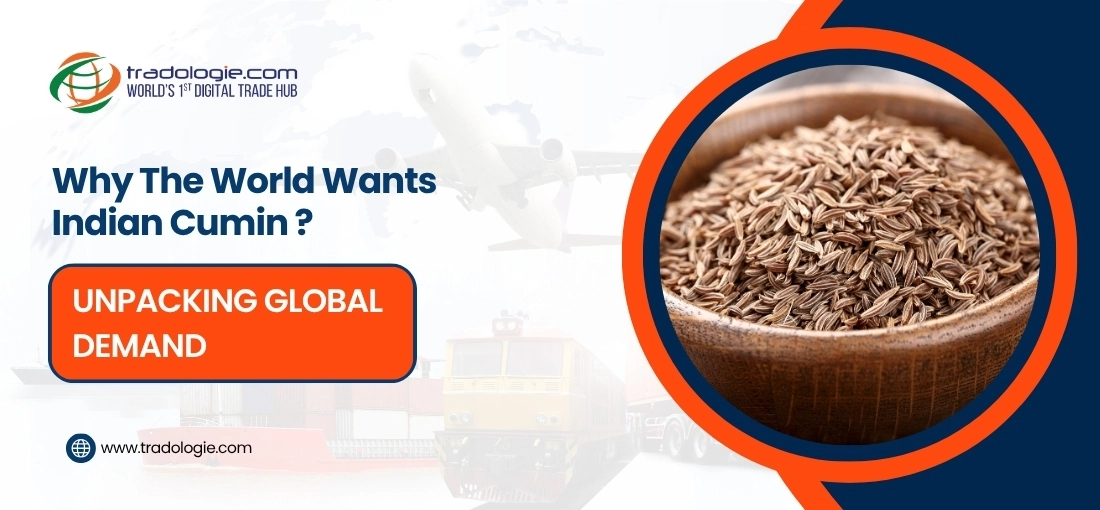Top Things To Know About The Global Black Pepper Trade Market
Key Highlights:
- Black Gold Legacy: Premium spice with strong global B2B demand and trade value.
- Market Size Growth: Projected USD 4.7B (2025) and USD 6.4B (2033), driven by HORECA and pharma sectors.
- Leading Exporters: Vietnam, Brazil, Indonesia, India, Sri Lanka, Malaysia; UAE and EU as re-export hubs
- Key Importers: Europe, UAE, Pakistan, Egypt due to high food processing and retail demand.
- HS Codes: HS 0904 (general), 090411 (whole), 090412 (crushed/ground) essential for trade clarity.
- Form Demand: Whole vs Crushed Pepper cater to different industrial and retail needs.
- Top Varieties: Malabar, Tellicherry (India), Vietnamese, Lampong (Indonesia), Sarawak (Malaysia), Brazilian.
Introduction:
There is a saying among chefs that black pepper does not just spice the food; it wakes it up. It's one of those rare and premium spice commodities with exceptional pungency and intense aroma. The historic fact that it was called “black gold” among the black pepper traders is a testament to the esteemed legacy it carries since the time of ancient spice routes.
In today's modern-day trade, this splendid commodity, known for elevating flavours with its spark of heat and carrying numerous medicinal properties, attracts a high commercial value in the international trade for bulk black pepper importers.
This informative blog piece will articulate some of the top b2b business-related facts about the international black pepper trade market. So, let us get the ball rolling.
What Is the Global Market Size of Black Pepper?
The global black pepper market is a multi-billion dollar industry that caters to the wide needs of both the HORECA and Pharmaceutical sector. The market size is anticipated to reach USD 4.7 Billion in 2025 and USD 6.4 Billion till 2033. This exhibits a CAGR of 4.1% from 2025-2033 and tremendous trade opportunities for black pepper traders.
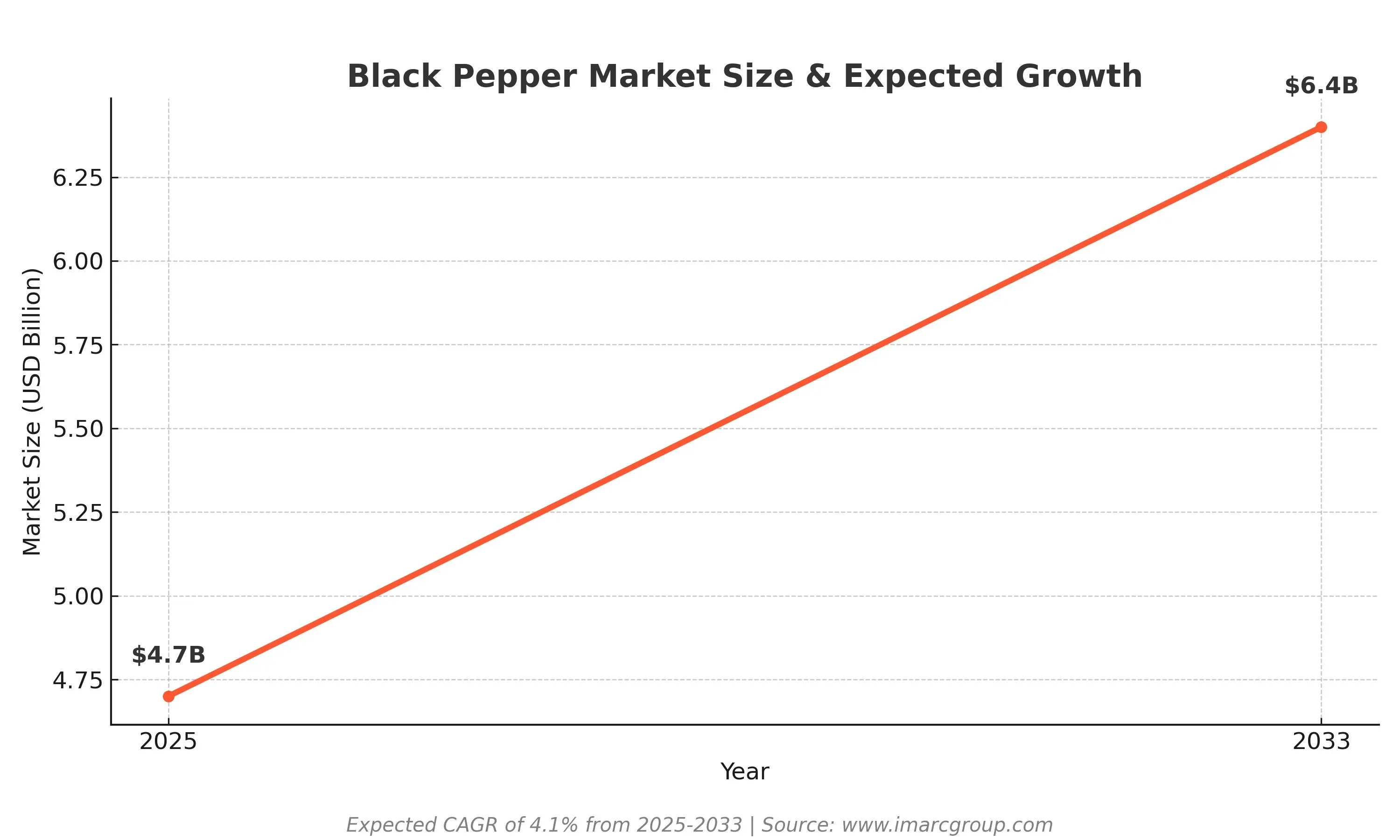
What Are the Top 10 Black Pepper Exporters Globally?
There are mainly two factors that come into play for a country to become a top exporter of a commodity. Either the soil's fertility and climatic conditions are ideal for cultivation or the country acts as a re-export hub because of its geostrategic location, and the case is no different with respect to black pepper as well.
Vietnam, Brazil, Indonesia, Sri Lanka, India and Malaysia are the countries that cultivate locally and export black pepper in bulk globally. While countries like the UAE, Germany, the Netherlands and many other EU nations are big re-exporters and cater to the demands in the Gulf and European markets respectively.
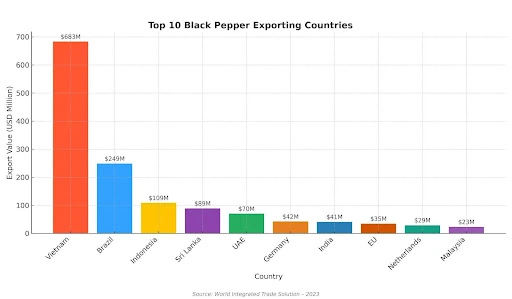
Here are the top 10 black pepper exporters (dried pepper-crushed or ground) globally in this informative bar graph.
What Are the Top 10 Black Pepper Importers Globally?
The import demand for black pepper is shaped by the three major factors; zero or negligible local cultivation, enormous demand by food processing, HORECA, and retail sectors, and being a producer, the country faces a domestic demand gap.
Most European countries import black pepper in bulk from a mix of local demand and export industries. The same goes for the UAE. Countries like India and Vietnam, despite being significant producers import to keep up with the local demands or for blending purposes. Pakistan and Egypt import majorly for their domestic consumption.
Here are the top 10 black pepper importers (dried pepper-crushed or ground) globally in this informative graph.

What Are the Categorizations of Black Pepper Based on Their HS Codes?
There are three major categorizations of black pepper in terms of HS Codes in foreign trade market. Just like other commodities, these codes are used as reference points for traders to export or import black pepper in bulk.
In fact, they are explicitly mentioned in the trade documentations during the transactions between buyers and sellers. Let us understand them in detail.
HS Code: 0904
- Description: Pepper of the genus Piper; dried or crushed or ground fruit of the genus Capsicum or of the genus Pimenta.
- Scope: Covers all forms of pepper (black and white pepper) from Piper genus in whole, crushed, or ground form.
HS Code: 090411
- Description: Pepper of the genus Piper, neither crushed nor ground.
- Scope: Specifically covers dried whole black and white pepper (no crushing, no grinding).
HS Code: 090412
- Description: Pepper of the genus Piper, crushed or ground.
- Scope: Covers powdered or ground black and white pepper used in retail packs, spice mixes, and industrial food processing.

The Market Share of Whole Pepper Vs Crushed Pepper (HS 090411 Vs 090412)
Understanding the market share of each black pepper’s each form plays a significant role in devising a successful export strategy for bulk black pepper exporters. The demand for these forms is shaped by a variety of factors which majorly includes the application in the food processing industry.
Here is the market share of HS Code: 090411 and HS Code: 090412 (whole pepper Vs crushed pepper) in the global agro trade market in this informative graph.
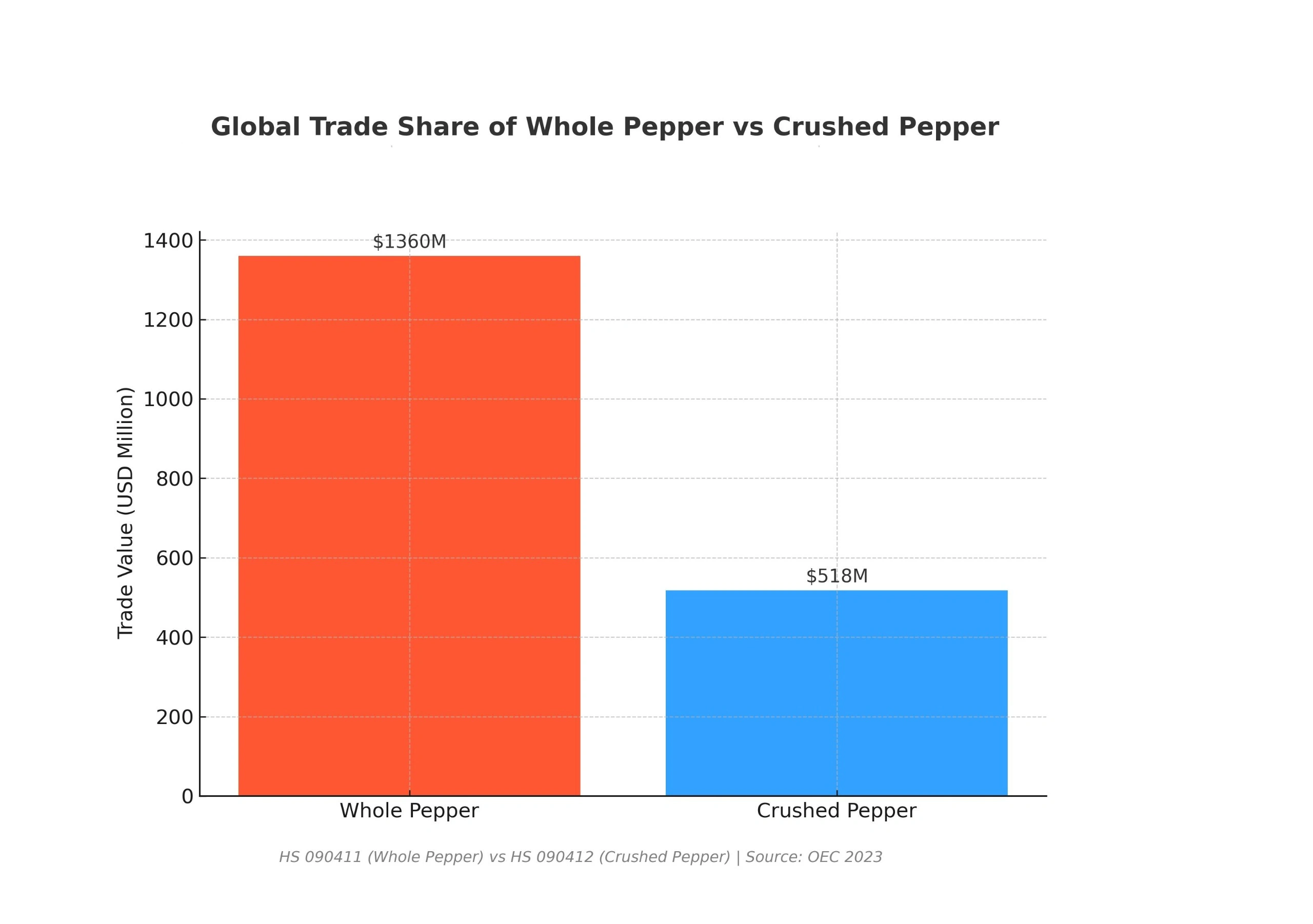
What Are the Top Famous Types of Black Pepper In Global Trade?
Malabar Black Pepper (India)
- It is majorly grown on the Malabar Coast of Kerala in India and is known for rich earthy aroma and sharp heat.
- Highly valued in premium whole pepper trade markets and spice blends in Europe and the Middle East.
Tellicherry Black Pepper (India)
- Tellicherry black pepper comes from fully ripened, larger berries with bold, complex citrusy notes.
- It is preferred in gourmet kitchens and high-value B2B spice exports for its superior flavor.
Vietnamese Black Pepper (Vietnam)
- Vietnam leads global production and offers consistent quality and mild to medium heat.
- Favored in bulk spice trade, food processing, and large-scale B2B buyers for its affordability.
Lampong Black Pepper (Indonesia)
- Cultivated in Sumatra, characterized by small berries and strong pungency.
- Popular for ground/crushed pepper exports to the USA and Europe, used in industrial spice blends.
Sarawak Black Pepper (Malaysia)
- Grown in Malaysian Borneo, known for clean, mildly fruity taste with moderate heat.
- Sought after by premium food manufacturers and specialty spice importers.
Brazilian Black Pepper (Brazil)
- Produced mainly in Pará and Espírito Santo and offers mild flavor with good oil content.
- Used in bulk B2B trade for crushed, ground, and oil extraction for sauces and processed foods.
Digitisation and Modern Procurement
While traditional trade channels remain important, digitisation has redefined procurement efficiency. Transaction-oriented B2B platforms enable bulk rice importers to access structured supplier networks, receive verified quotations, and streamline documentation workflows, reducing operational bottlenecks while retaining negotiation control.
These digital processes ensure buyers can align procurement plans with real-time market updates, seasonal pricing movements, and shipment capacities.
Conclusion
In conclusion, the global black pepper trade offers immense opportunities for B2B bulk black pepper importers and exporters due to its steady demand, premium value, and diverse industrial uses. Understanding market size, key exporters and importers, HS codes, and popular varieties can help businesses make informed trade decisions while leveraging the potential of this “black gold” in the international spice market.

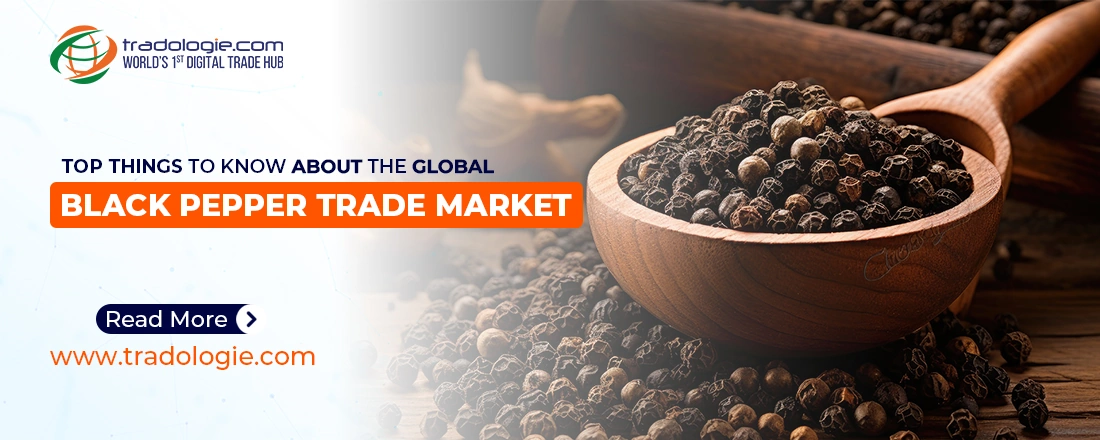
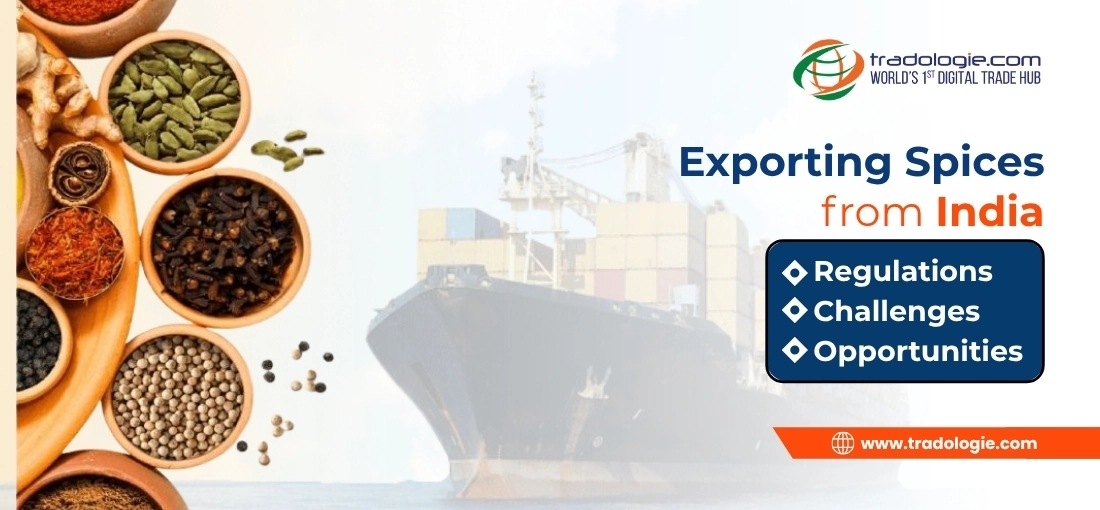
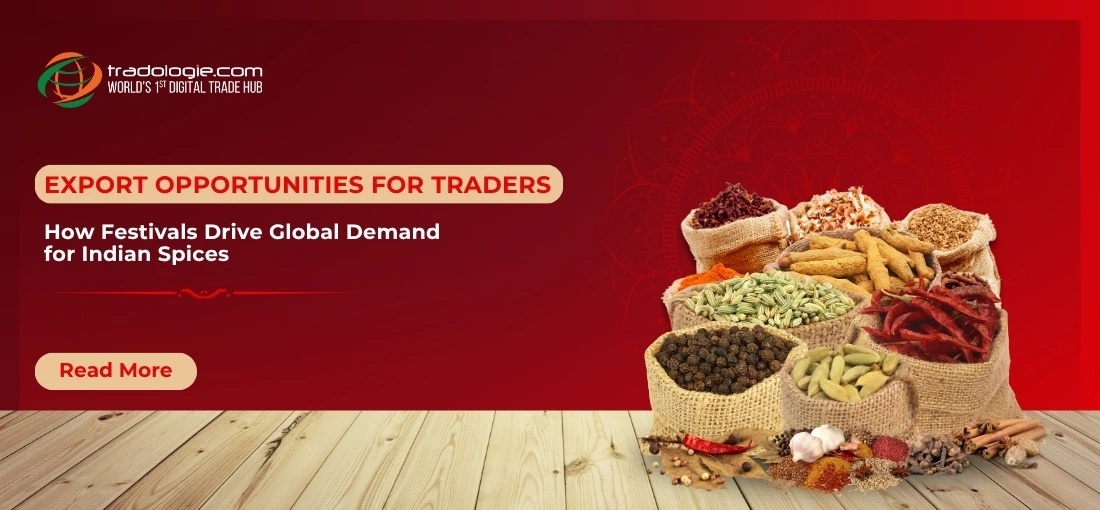
.webp)
